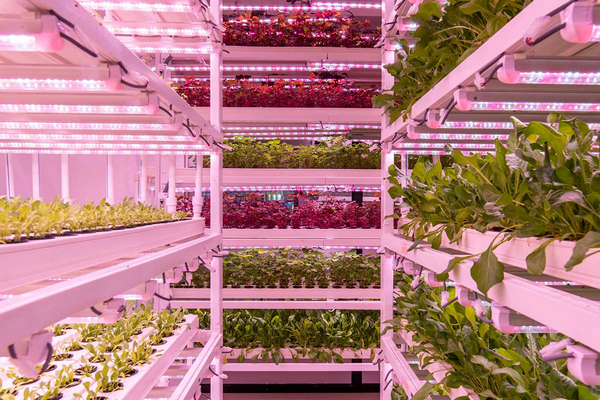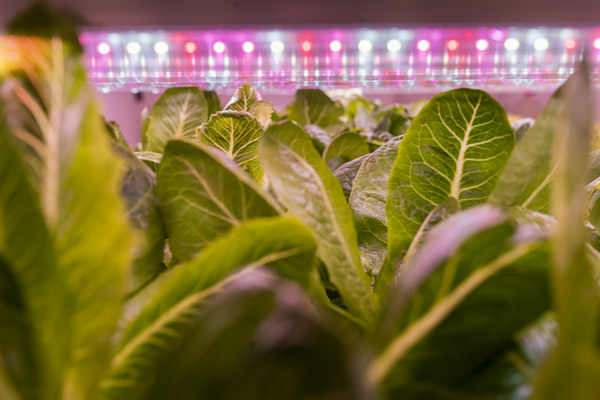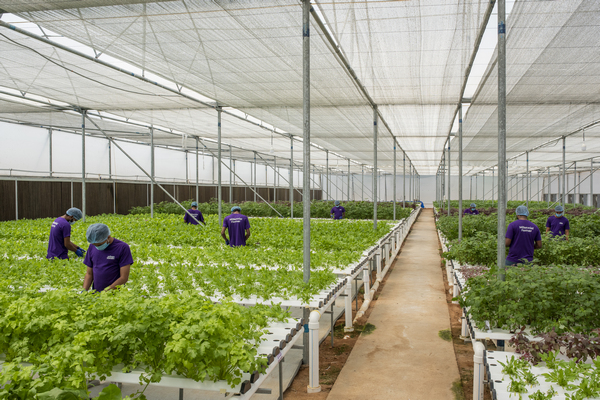"The extremely intensive capital, high operational energy costs, lack of automation, and the lack of variety suitable for hydroponics. We've solved all of these problems, building much cheaper, more efficient processes and crop diversity. We're able to build farms for one-tenth the costs of global competitors in the high-end market," says Vihari Kanukollu, co-founder of UrbanKisaan, an Indian vertical farm supplier.
When UrbanKisaan first started, their mind wasn't set on supplying systems to farmers. Instead, they grew their own crops first to get the hang of the entire cultivation process. That experience led them to further develop their products and solutions for the CEA space today. And that offering is available at a much lower price in comparison to many of their competitors, as Vihari claims.
According to Vihari, the aim of UrbanKisaan has always been to be a technology company, "but how will you sell something if you haven't gone through the entire journey of growing, setting up, and selling produce yourself? So that's what we've done over the past two years, and now we're looking to supply that technology and partner with other farmers to increase their efficiency."

Vihari Kanukollu pictured at the Asia Pacific Agri-Food Innovation Summit 2022 in Singapore
Thanks to their experience in the field, UrbanKisaan can help find smart solutions for the lowest cost, or as Vihari says, 'street-smart solutions.' That's always been the core thesis of the company. Work as if there is very little money to spend, thinking from the farmer's perspective. Thus, how would you solve a problem as affordable and efficient as possible?
Vihari adds, "After all, you need to compete with traditional farmers and at least match their prices. That's why we don't mind being low-tech, as that is the current demand of the Indian market. We can't build expensive farms and then compete with traditional agriculture while also trying to get our initial investment back. Therefore, we build technology that keeps India in mind, but this also means that in every other country, we can be the cheapest."

Price competitive
"If others would spend one million dollars on a farm, we'd build it for 100,000 dollars. We've already built 30 acres of farm in India for a fraction of the cost, using less energy and farms that can grow all vegetable crops in hydroponics, such as root crops, gourds, berries, and melons, all indoors. We're also some of the first to grow saffron indoors in outside Kashmir, India, and are even more efficient than the regular saffron farmers."
The variety in crops grown also has to do with the price of the farm, according to Vihari, since the reason most people sell things like lettuce, basil, and kale is that it sells at 5 or 10 dollars a kilo, and is a safe crop to grow when keeping your initial investment in mind. "But if you invest less, you'll start looking at other crops to grow because now you can choose what to do instead of going with the safe choice."

Expansion plans
"We don't aim to be the largest farm in India after all, but instead, want to supply tech to companies globally. We are currently focusing on the Middle Eastern and Southeast Asian markets and partnering with companies that fall into one of four categories. Corporations that want to diversify from existing businesses, supermarkets that want to backward-integrate, companies that want to enter new markets with new tech, or existing farmers who want to increase efficiency. But we are also looking to expand into the European market and eventually globally," Vihari concludes.
The timing is seemingly perfect for their plans, as energy prices have been on the rise all over the world. There is no farm too big or small for UrbanKisaan, and they can ship their hard- and software everywhere in the world.
"We can set up an acre tomato greenhouse for about 10.000 dollars. It's not high-tech, though it uses some automation in nutrient dosing, seeding, and reducing human error, but nothing more. After all, the point is that you can use technology to grow more efficiently than traditional farmers. The goals of this technology are simple. Grow more efficiently, use fewer pesticides, and have a better-tasting product. That's all consumers want. Whether you use robots to do so or not if this means they become more expensive. It's all about cost and quality."

Speed Breeding
We also leveraged our expertise in manipulating the crop lifecycle using various parameters of nutrient composition and light quality in 'speed breeding' programs. We are the first beneficiaries of this in-house technological achievement; we could breed several lines of about eight different crops in the last two and half years and produce the seed on a large scale for hydroponic commercial cultivation. We are now making this technology publicly available, which might be especially boon to seed companies across the globe.
 For more information:
For more information:
UrbanKisaan
www.urbankisaan.com
